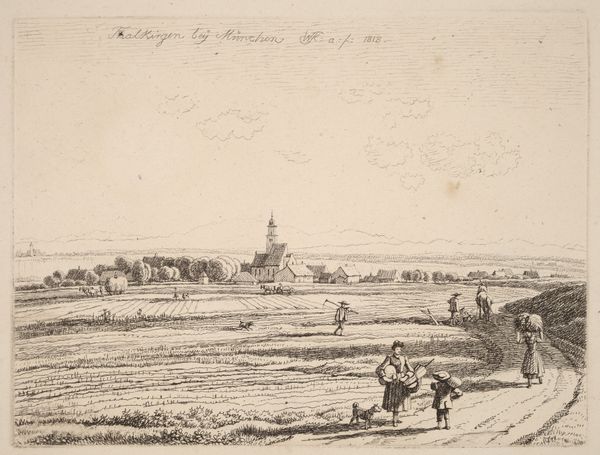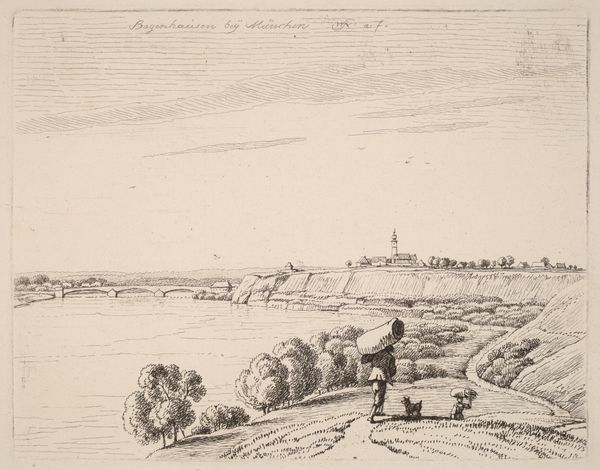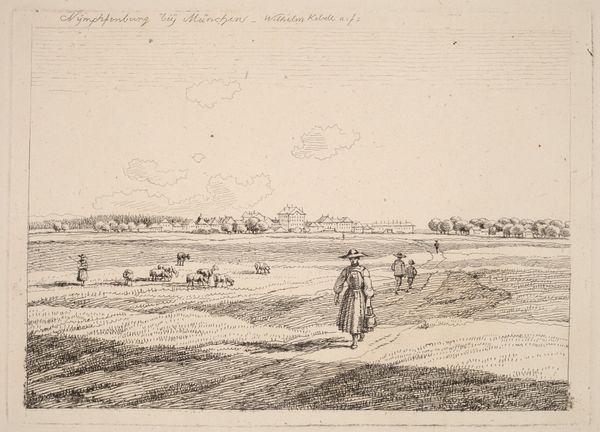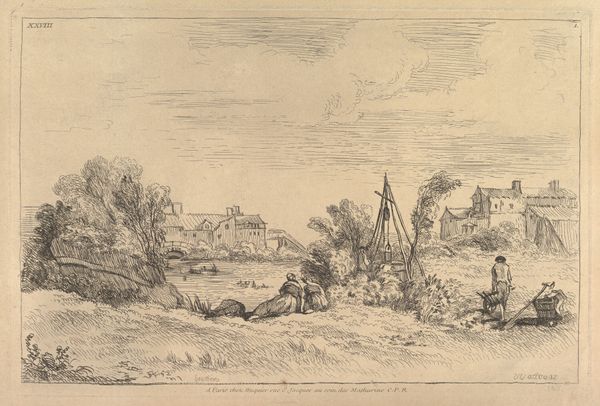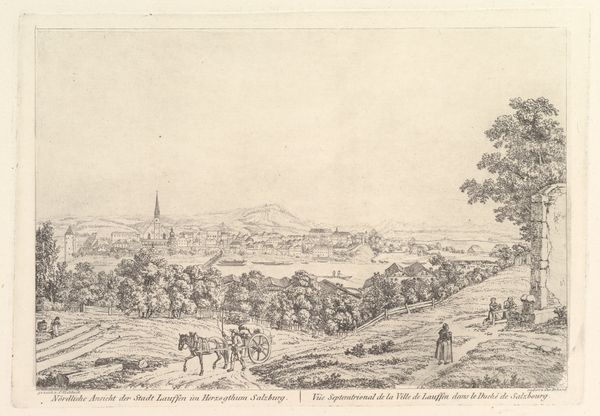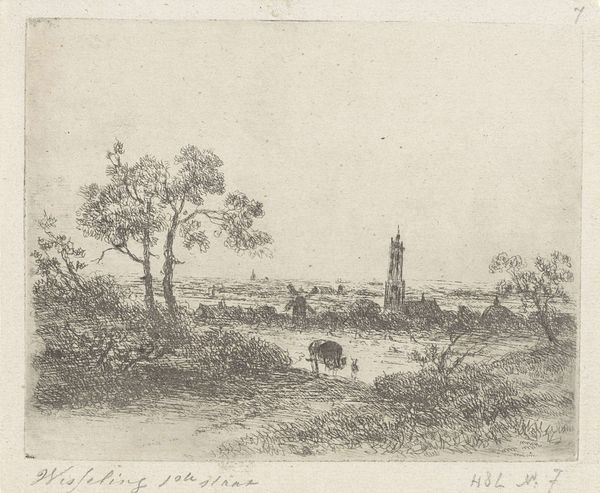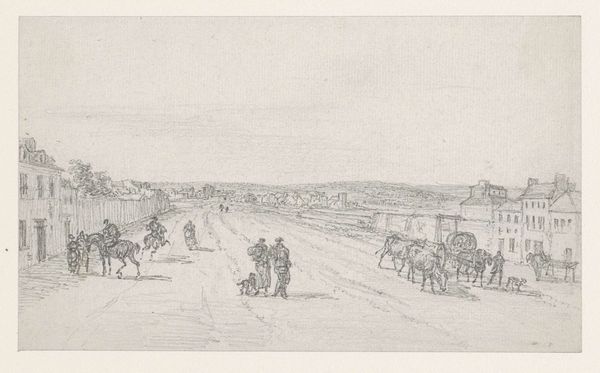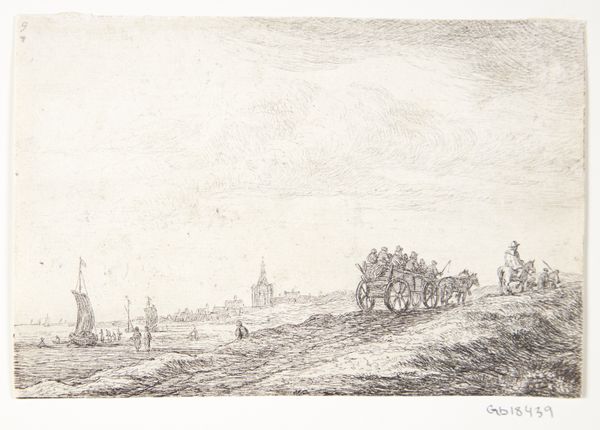
drawing, print, etching
#
drawing
#
amateur sketch
#
light pencil work
# print
#
pen sketch
#
etching
#
pencil sketch
#
incomplete sketchy
#
landscape
#
figuration
#
idea generation sketch
#
sketchwork
#
romanticism
#
pen-ink sketch
#
line
#
pencil work
#
initial sketch
Dimensions: plate: 11.9 × 15.5 cm (4 11/16 × 6 1/8 in.) sheet: 21.5 × 29.8 cm (8 7/16 × 11 3/4 in.)
Copyright: National Gallery of Art: CC0 1.0
Curator: This delicate drawing, titled "Sendling," dates back to 1818 and is attributed to Wilhelm von Kobell. It seems to be an etching or print derived from a preliminary sketch. What's your immediate impression? Editor: There's a curious tension between the sweeping landscape and the fineness of the lines. The composition feels a bit unbalanced; all that empty sky! But the textural details in the foreground pull me in—the meticulously rendered grass and the figures on the path. Curator: I find it fascinating to consider the social context of such a landscape. Etchings and prints were often produced in multiples, making art accessible to a wider audience beyond the wealthy elite. Kobell, celebrated for his battle scenes, engages with a different kind of landscape in "Sendling". Editor: The formal elements echo this shift. Note the use of line – not just to depict form, but also to create texture and atmospheric perspective. See how the lines become fainter and less dense as we move toward the horizon, simulating distance and depth. And the lone walkers lend scale and rhythm! Curator: Indeed, and those figures, look at their clothing, perhaps working or middle class. This reflects an evolving societal gaze in the 19th century, as art increasingly mirrored everyday life beyond aristocratic circles. It points towards the era's emerging sense of national and regional identity. The making of this print, its production process, contributes directly to our understanding. Editor: It's subtle but important to observe how Kobell employed visual language typical of Romanticism. It is there in the vastness of nature against the diminutiveness of the human form and especially in the spiritual overtones imbued with each architectural flourish! The Church's spire, piercing through clouds! Curator: Analyzing the work through the lens of materiality and process expands our understanding. Etching allowed for reproducibility and wide dissemination and fostered this nascent appreciation for the everyday experiences. It's not just the scene depicted, but how its method speaks to its cultural consumption! Editor: Exactly, analyzing both is crucial, for from the interplay of structure and process emerges deeper, perhaps, even a social understanding of artistic creations that otherwise feel like just observations! Curator: Yes. Viewing art from various angles only deepens one’s overall appreciation. Editor: Quite. There's always so much more to art than just the surface of what is visible.
Comments
No comments
Be the first to comment and join the conversation on the ultimate creative platform.
